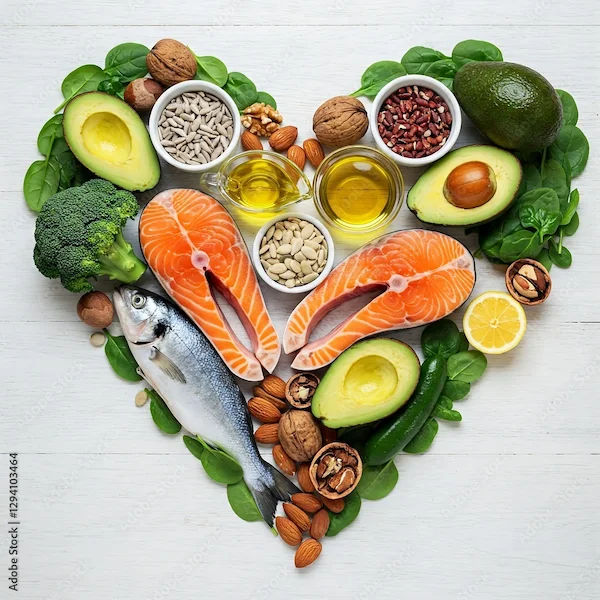Guide to Stroke Heart Disease: Causes, Symptoms and More

Written by Dr Shreya Sarkar
Last updated on 3rd Jul, 2025
Stroke is a severe condition that occurs when the blood supply to a portion of the brain is cut off. It interrupts the flow of blood and nutrition to different parts of the body, including the brain, causing cell death within minutes. Strokes are primarily categorised into two types: ischemic and hemorrhagic. Most of the cases may be categorised as ischemic, which results from blood clots or narrowed arteries. Whereas the other half of the cases constitute hemorrhagic strokes, which happen when there is a broken blood vessel and the blood spills over to the brain and its vicinity.
In general, heart disease refers to sicknesses that affect the performance of the heart: familial hypercholesterolemia is one such heart disease. Other types of heart disease include coronary artery disease (CAD), characterised by the narrowing of arteries due to plaque formation, and arrhythmias, which are irregular heartbeats. Additionally, heart failure represents the heart's lowered ability to pump blood effectively, while valvular heart disease involves disorders affecting the heart valves.
Understanding the connection between the heart and brain is vital, as they are intricately linked through the vascular system. Some disorders like atrial fibrillation—an irregular or quivering heartbeat – cause blood clots within the heart, and one of them moves into the brain to trigger a stroke. Moreover, shared risk factors like high blood pressure, diabetes, and high cholesterol increase the likelihood of developing the two afflictions.
Causes and Risk Factors
Awareness of stroke and heart disease is essential to understand that these two share many common risk factors. Though each condition has different precursors, there are common factors that increase the likelihood of developing both.
Underlying Causes of Stroke
- Ischemic Stroke: This occurs due to the blockage of the arteries caused by plaque lining up along the artery walls (atherosclerosis) or blood clots.
- Hemorrhagic Stroke: This occurs when the blood vessel around the brain bursts, leading to bleeding (haemorrhage) in the brain or its surrounding areas.
Underlying Causes of Heart Disease
- Atherosclerosis: Plaque on the walls of arteries.
- Congenital Defects: Heart anomalies which have been apparent since the time of birth.
- Previous Heart Attacks: Weakened heart over time due to heart attack.
- Chronic Conditions: Health conditions like high blood pressure, diabetes etc.
Shared Risk Factors
- Hypertension: Damages blood vessels
- Diabetes: Affects blood vessels and nerves
- High Cholesterol: Leads to plaque buildup
- Smoking: Damages blood vessels and increases clot risk
- Obesity and Inactivity: Contributes to other risk factors
Addressing these factors through lifestyle changes and medical care can significantly lower the risk of stroke and heart disease.
Signs and Symptoms
Recognising the signs and symptoms of stroke and heart disease is critical for ensuring timely intervention. Early detection not only improves outcomes but also reduces the risk of severe complications.
Identifying Stroke Symptoms
Prompt recognition of stroke symptoms can save lives and limit long-term damage. The acronym BE FAST is an effective tool-
- Balance: Losing coordination or balance suddenly
- Eyes: Sudden trouble while seeing things; blurred vision
- Face: One side of the face droops or feels numb
- Arm: Weakness or numbness in one arm
- Speech: Slurred or garbled speech or difficulty understanding others
- Time: Act quickly—call emergency services immediately if these symptoms appear
Further, heart disease symptoms can vary widely but often include:
- Chest pain or discomfort often described as pressure or tightness
- Shortness of breath, especially during physical activity or rest
- Pain in the neck, jaw, back, or upper abdomen which is more common in women
- Nausea or vomiting, particularly in women
- Extreme fatigue, which may occur days or weeks before a major event like a heart attack
Although stroke and heart disease symptoms can overlap, strokes are typically marked by neurological deficits such as sudden confusion, loss of coordination, or difficulty speaking. Heart disease symptoms are often more physical, like chest pain or shortness of breath.
For both conditions, seeking immediate medical attention is critical. Rapid response can minimise complications and improve chances of recovery.
Diagnosing Stroke and Heart Disease
Accurate diagnosis is a crucial factor in managing stroke and heart disease. When these conditions are detected early, sophisticated diagnostic equipment can be paired with the right approach to offer effective treatment.
Diagnostic tests for stroke include imaging techniques like:
- CT scans to identify haemorrhage in the brain
- MRI scans to reveal changes in the brain’s tissue
- Carotid Ultrasounds and Cerebral Angiography to quantify blood flow and look at the health of blood vessels
For heart disease, common diagnostic methods include:
- Electrocardiogram (ECG) to monitor the heart's electrical activity
- Echocardiogram for imaging heart structure and function
- Stress Tests to evaluate heart performance under physical exertion
- Cardiac catheterization to examine blood flow in coronary arteries
One has to remember though that early diagnosis is essential for both conditions. Early stages are easier to treat, after the condition has advanced it is highly possible to worsen and cause severe consequences.
Treatment Options
Strokes are managed according to type and extent. In cases of ischemic strokes, the clot-dissolving agent Tissue plasminogen activator (tPA) is given to the patient if treatment is given within a defined time frame. Sometimes, mechanical thrombectomy is carried out with the intention of removing the clot mechanically. For hemorrhagic strokes, concern is given to stopping the bleeding and decreasing intracranial pressure medically or by invasive procedures such as clipping of an aneurysm or craniotomy.
The management of heart disease is also complex and depends on the illness type. These include things like adopting a heart-and-stroke diet modification, which entails exercising more or changing one's lifestyle. Drugs such as beta and alpha blockaders, statins, and anticoagulating agents are also prescribed. In other very serious instances, interventional procedures, including angioplasty, or open heart surgery, including coronary artery bypass grafts (CABG), may be required to reopen blocked arteries or fix them up.
It is important to reach an agreement about stroke and heart disease, as the individual needs a complex treatment plan. This encompasses precise management of both conditions, lifestyle changes to enhance general well-being, and evaluations to measure progress and assess the outlook for future problems.
Prevention Strategies
Here are some prevention strategies to keep in mind when aiming to manage heart and brain health-
- Maintain a healthy weight
- Limit alcohol consumption
- Reduce salt intake to control blood pressure
- Manage stress through mindfulness or relaxation techniques
- Get adequate sleep (7-9 hours per night)
- Monitor and control blood sugar levels
- Stay hydrated and avoid sugary beverages
- Avoid trans fats and opt for healthier oils
- Stay consistent with prescribed medications
- Participate in regular health screenings
Managing Long-term Effects
Common treatments for stroke are physiotherapy for movement disorders, occupational therapy for disability in performing daily tasks, and speech therapy for difficulties in speaking. Cardiac rehabilitation programs, in contrast, are centred on exercise training and education about heart disease, lifestyle and stress counselling.
Depression or anxiety are regular experiences of a patient after a stroke as well as after getting diagnosed with a heart disease. Under such circumstances, support groups and counselling can be of great importance to patients since they help speed up the recovery process.
Role of Nutrition and Exercise
A balanced and healthy diet containing fruits, vegetables, lean proteins, whole grains, and healthy fats is critical to heart and brain health. Including physical activity in everyday routine also helps prevent a recurrence by providing a healthy weight, improving blood flow, and managing cholesterol.
Other agents, such as omega-3 fatty acid, have also shown promising results to manage heart health. However, they should only be taken under medical supervision.
Emerging Research and Innovations
New advancements in medical treatments, such as minimally invasive procedures and cutting-edge medications, are transforming care for stroke and heart disease. Diagnostic innovations, including wearable devices and artificial intelligence tools, enable earlier and more precise detection of these conditions. The future holds promise for personalised medicine, integrating genetic and environmental factors to provide tailored care for each patient.
As research evolves, these breakthroughs are expected to significantly improve outcomes and quality of life for individuals affected by stroke and heart disease.


